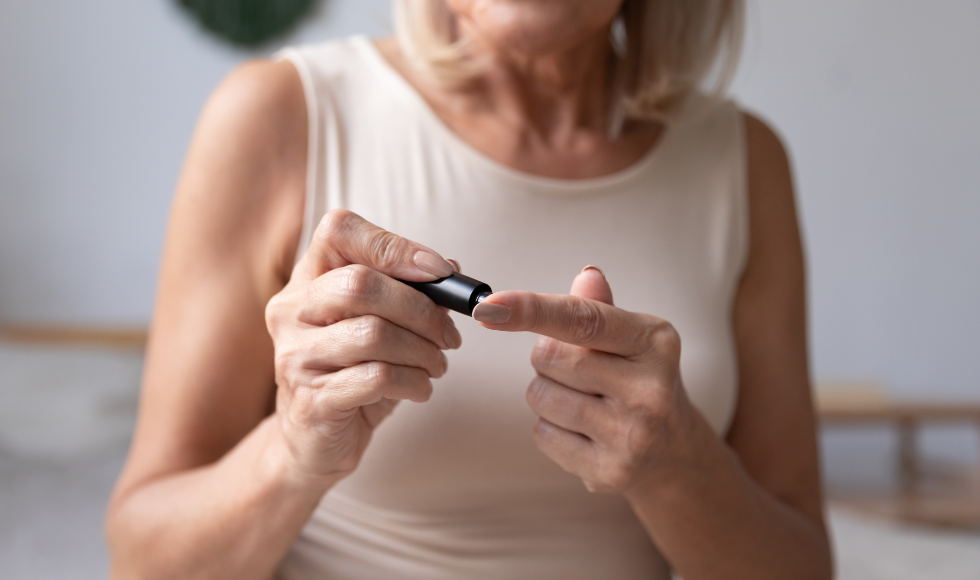Older persons with Type 1 diabetes face risk of reduced muscle strength and more cardiovascular issues, researchers find

June 9, 2022
Older adults with Type 1 diabetes (T1D) are at significantly higher risk of both muscle weakening and cardiovascular complications, say McMaster University researchers.
Using gripping power as a measure, researchers compared the muscle strength of 63 participants from the Canadian Longitudinal Study on Aging with T1D to a control group of 63 without diabetes, tracking them over a three-year period. The average age of those surveyed was 59 when first assessed.
The research has been published in The Canadian Journal of Diabetes.
The study authors also found that older patients with T1D had abnormally low diastolic blood pressure – when the heart muscle is relaxed between beats – which might be an indicator of early increased cardiovascular disease risk.
The study follows related research showing that T1D patients over 40 had reduced leg-muscle strength. Taken together, the studies suggest patients should be trying to preserve their strength with resistance-based exercises such as resistance bands and weights.
“We now have two pieces of evidence showing that patients with T1D have reduced strength and undertaking resistance-based exercises can compensate for this loss” said senior author Thomas Hawke, a professor in the Department of Pathology and Molecular Medicine.
Hawke explained that some people with T1D avoid exercise, fearing it will lower their blood sugar.
“Unlike aerobic exercise, resistance training is not usually associated with lowering blood sugar in T1D. In fact, it can even increase blood sugar levels a little. More and more studies are proving the benefits of resistance exercise. The benefits are multifaceted,” he said.
Hawke said the evidence is now overwhelming clear that diminishing muscle strength is strongly associated with higher mortality.
“It is also significantly correlated with your frailty and ability to live independently. Can you carry a grocery bag, pick up that laundry basket, or even get up from your toilet unassisted? We need to identify these issues before a person suffers a serious fall and requires hospitalization or institutionalization.”
Maureen MacDonald, a professor in the Department of Kinesiology said that the Canadian Longitudinal Study on Aging is providing important data to help identify areas for future research.
“We have now received a grant to follow-up this research with an exercise training study to determine if we can lessen some of the negative health impacts of T1D we observed in this study.”
Co-author Lauren Turner, who has T1D herself, said the research can guide clinical practice and help patients with diabetes make better decisions about their health.
“This study shows the importance of being active and maintaining one’s muscle health to ensure longevity, as well as using insulin and monitoring blood sugar levels,” said Turner, who completed her undergraduate degree in Kinesiology in Hawke’s lab. She is now completing her master’s degree at York University.
“As someone with diabetes, I enjoy running and being active, and it is all about finding the balance between what is good for you and what you like,” she said.
An estimated 300,000 Canadians live with T1D. The disease typically presents in childhood/adolescence and is one of the most common chronic pediatric diseases, resulting in serious complications and reducing life expectancy by as much as 15 years.
The study was funded by the Canadian Institutes of Health Research.


